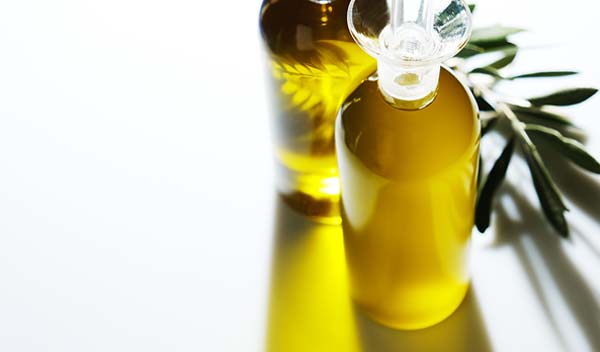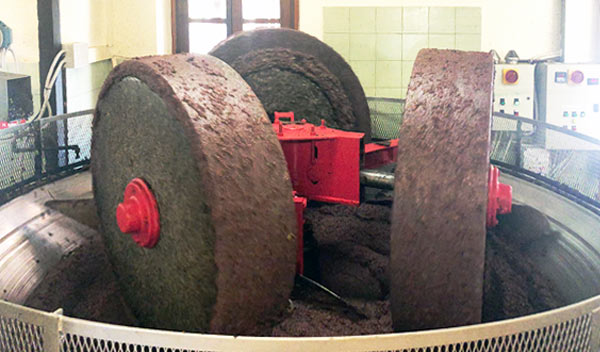Extra Virgin Olive Oil Production
Italian extra virgin olive oil (EVO oil) is one of the most appreciated products in the world by lovers of good food and a healthy lifestyle, but those who know exactly how it is made are few. In this step by step guide you will discover how quality extra virgin olive oil is made.
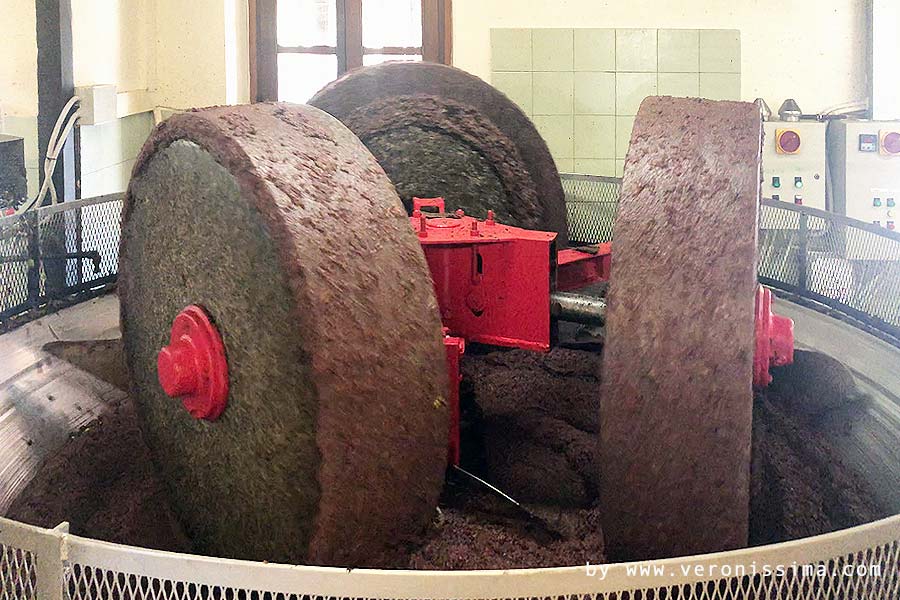
The best way to find out all about extra virgin olive oil is to visit a production area, see the olives growing on the trees, breathe in the inebriating aroma of fresh ground olives, taste the oil fresh out of the centrifuge. Join one of our tours with tasting in the production areas of Verona.
Info & Bookings:
+39 333 2199 645 info@veronissima.com P.I. 03616420232 C.F. CPPMHL74L13L781C
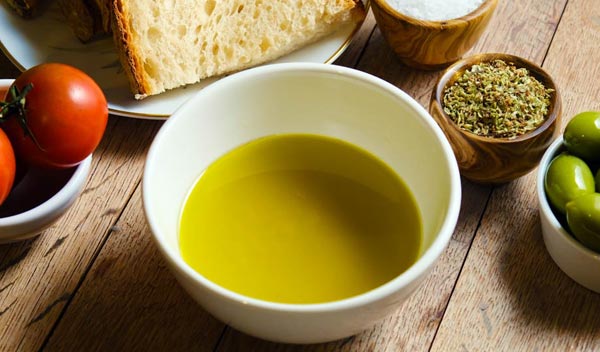
Olive Oil Tour in Verona
Discover the EVO oil producing area around Verona, visit a frantoio and taste delicious products.
FIND OUT MORE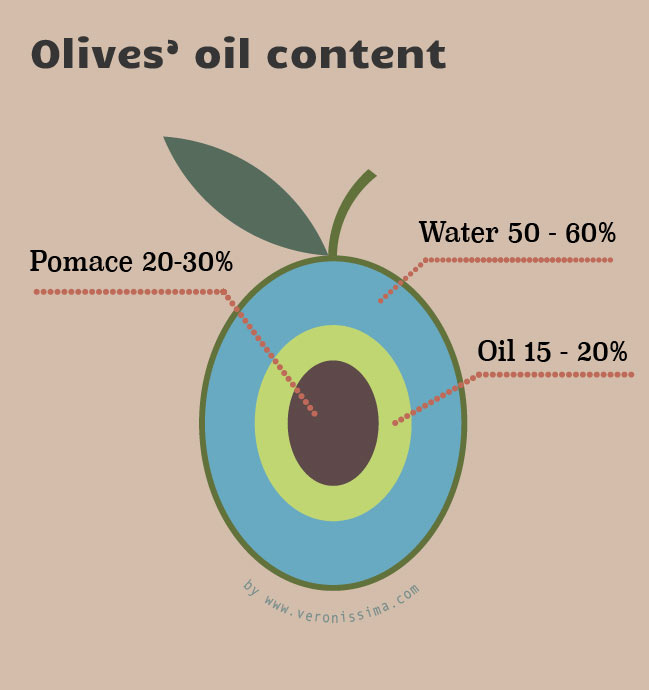
Olives are made up of about 50% water, between 15 and 20% oil, solid residue (stone, pulp fibers). Percentages can vary depending on olive varietals, the area in which they are grown and each year weather conditions.
The production of olive oil consists in separeting these three elements.
The only methods that guarantee that olive oil maintains its extraordinary taste and beneficial properties are mechanical ones at low temperature. Only in this way can extra virgin olive oil be obtained.
1. Olives Harvesting
The harvest takes place in autumn. In Italy, depending on the area and the time of maturation of the olives can go from early October until early January.
Degrees of ripeness
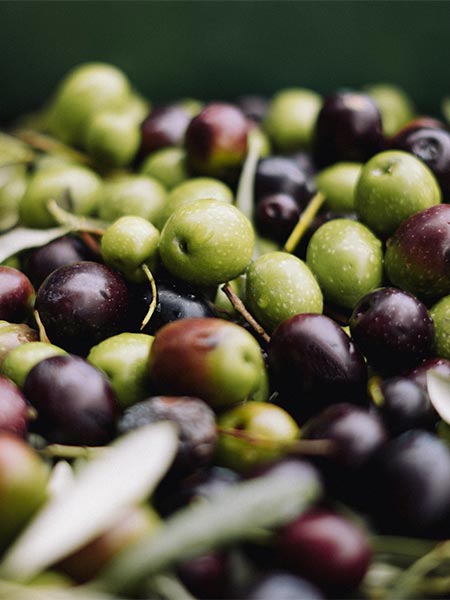
The choice of the moment in which to harvest the olives is very important.
All olives are green when unripe and turn black when they fully mature. Different levels of ripeness will give different types of oil. An oil made from green olives will be very rich in antioxidants and will have a very low acidity, but a bitter taste and quite pungent sensation in the throat.
An oil made with fully ripe olives will be softer and sweeter but with less antioxidants and a higher acidity. Between the two extremes there are many intermediate choices that aim at the right compromise between taste and beneficial properties.
2. Washing
After harvesting olives are washed with water to remove leaves, soil and other unwanted materials that could transfer impurities and a bad taste to the final product.
Traditional Method Vs Continuous Process
There are two methods for producing olive oil: traditional and the more modern continuous process. In many mills they still coexist and there are supporters of both ways and even hybrid solutions.
3. Milling
With traditional methods the olives are ground with large stone grinders that turn until they are reduced to a homogeneous paste.
With more recent methods, the milling of the olives can take place with hammers or grinders.
4. Gramolatura (Malaxing or churning)
In special containers the olive paste obtained in the previous step is stirred for a certain period of time. This process allows the micro droplets of oil that are released with the milling to aggregate into larger and larger drops. This facilitates the subsequent separation from the solid part.
In the most modern systems, crushing takes place under nitrogen which prevents any oxidation.
5. Pressing
This is the operation that separates the liquid part of the olives, consisting of a mixture of water and oil, from the solid part, fibers and remains of the pits.
It is at this stage the biggest difference between the traditional method and the continuous method.
Traditional Method
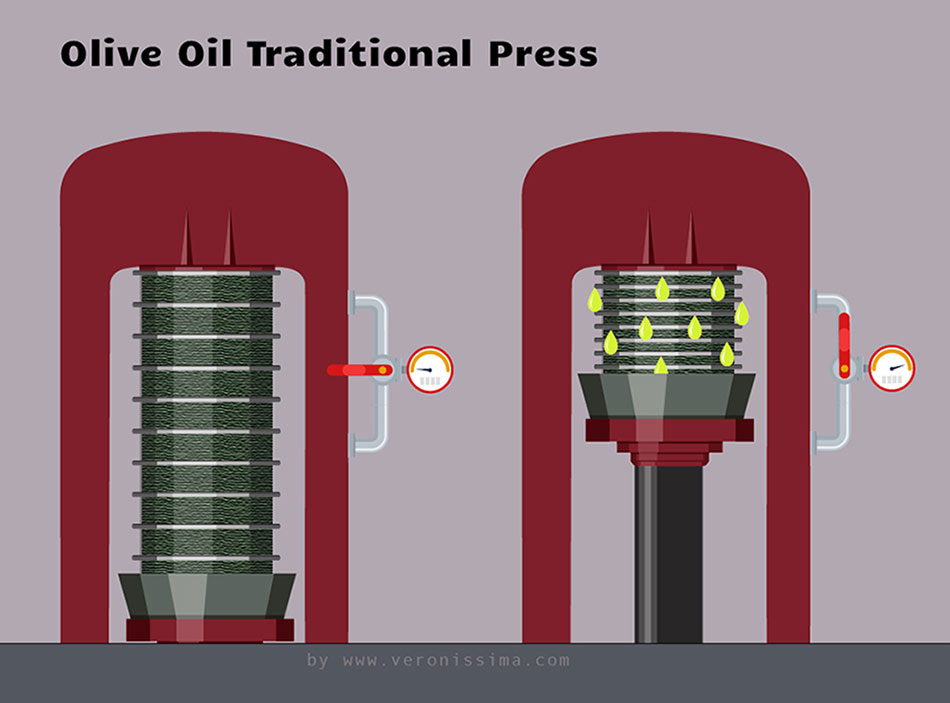
On special
Continuous Method
The three constitutive elements of the olive have different specific weights. The oil is the lightest (if you pour the oil into a glass of water it will remain on the surface), the water is in the middle, and the solids are the heaviest. Leaving the olive paste in a container, with time the three components would spontaneously separate because of gravity which makes the elements deposit in layers according to their weight. The continuous method only accelerates this process.
The olive paste enters a special horizontal cylinder called decanter or separator. The cylinder rotating at high speed, separates the components of the olive paste according to their different specific weight: oil, water, solid residue (pomace).
The continuous method is more modern, faster and requires less manpower.
6. Centrifugation
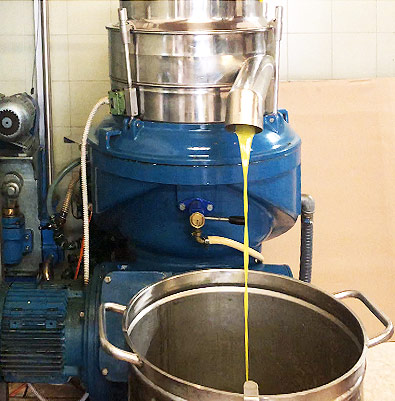
At the end of the extraction process the oil is still more or less mixed with water. A further centrifugation of the oily must (oil-water mixture) perfectly separates the oil from the vegetation water thanks to the difference in their specific weight.
6. Filtering
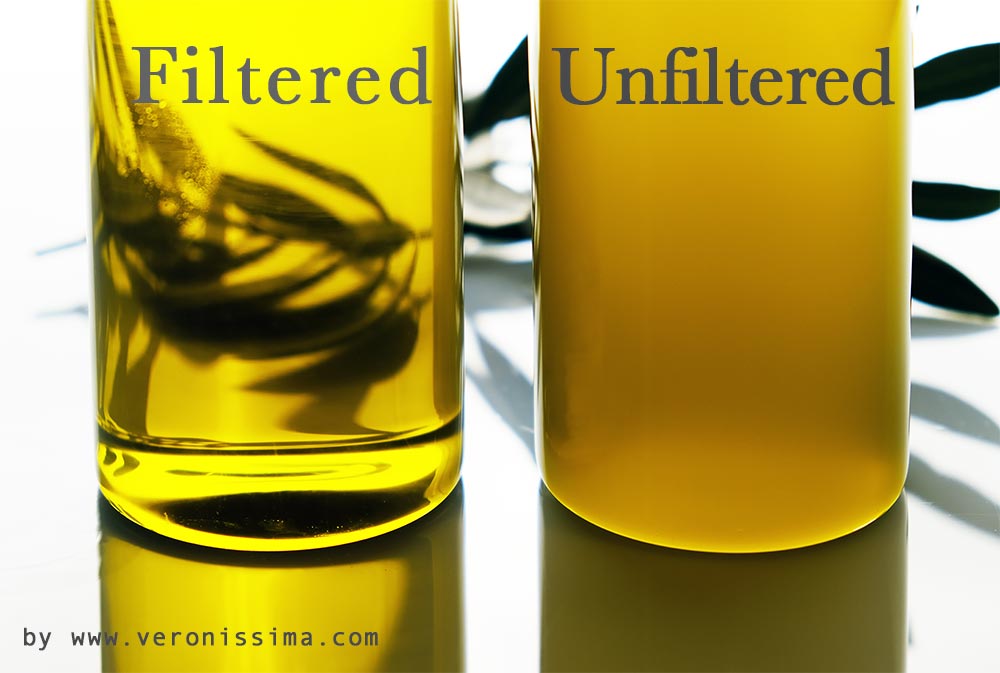
Freshly extracted olive oil often has a beautiful deep green color and is slightly cloudy due to the solid particles that are still inside it in suspension. Olive oil filtration removes these particles to give the olive oil a perfectly transparent appearance.
Filtering is an optional practice. Many producers bottle unfiltered olive oil. According to some, by filtering the oil, some of the intensity of the flavor is lost.
In any case, unfiltered oil will tend to become clear over time as the solid components will naturally settle to the bottom. Some consumers do not like having these deposits in the bottle which can cloud the oil again every time it is poured.
Attention!
A cloudy oil is often synonymous with freshly pressed and therefore very fresh oil. Some unscrupulous producers create this effect for marketing purpouses by adding substances that stay in suspension much longer. If your oil is still cloudy many months after production, it could mean that it has been adulterated.
Large industrial producers
These are the basic steps in olive oil production, what you will see when you visit a small, traditional mill. Larger, industrial producers will also use different methods, adding different substances at various stages of production in order to control production and ensure a consistent taste to the olive oil. The addition of chemical solvents to the processing residues or much higher processing temperatures that make the oil more fluid, can increase the yield of olives by a few percentage points. By doing so, however, oils loose many of their antioxidants, lacking of flavor or with many defects in taste.
Temperature is also fundamental for the quality of olive oil. Traditional methods ensure that during milling, stirring and pressing, the temperatures of the olive paste never exceed 80°F (27°C). Faster, industrial methods tend to produce higher temperatures that damage the flavors of the olive oil. The final result will obviously be different, less complex and intense.
Want to know more?
Info & Bookings:
+39 333 2199 645 info@veronissima.com P.I. 03616420232 C.F. CPPMHL74L13L781C

 IT
IT 日本
日本 DE
DE FR
FR 中文
中文 ES
ES